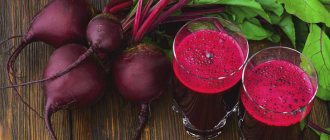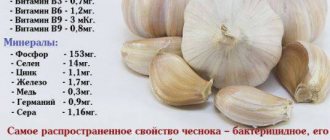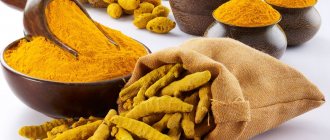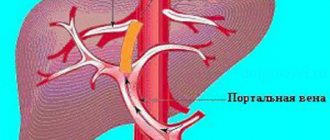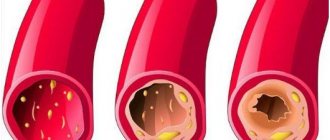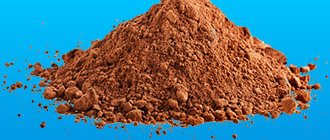Useful and healing properties
For hypertensive patients, diet is incredibly important, because consuming a product that is familiar to everyone can result in serious complications for them. So sauerkraut, which many people love, is also a controversial product for them. The beneficial properties of this dish have been known for a long time, and all this is thanks to its chemical composition.
Thanks to natural fermentation, the vegetable acquires components valuable for human health. This includes:
- enzymes;
- phytoncides;
- cellulose;
- microelements;
- macroelements;
- vitamins.
The vitamin range in sauerkraut is wide and quite rare. These are vitamins C, P, K, U, A and group B. Therefore, eating sauerkraut is useful for gastrointestinal problems, especially for ulcers both on the walls of the stomach and duodenum. There is a lot of vitamin C in this product, which makes it indispensable for strengthening the immune system.
Even long-term storage of pickled vegetables does not allow ascorbigen to evaporate. During heat treatment, even moderate, it turns into vitamin C, increasing the quantitative indicators of ascorbigen.
The choline contained in the composition helps to normalize metabolism and lipid processes. And considering that sauerkraut contains only 27 kcal per 100 grams, it is indispensable for those who are overweight.
And if you compare it with similar products, then in terms of mineral composition it has no equal:
- iodine;
- potassium;
- iron;
- magnesium;
- calcium;
- chlorine;
- silicon;
- cobalt;
- boron;
- copper;
- selenium;
- zinc;
- sulfur.
Enzymes and amino acids make sauerkraut healthy. These are lysine, methylmethionine, tyrosine, as well as flavonoids and probiotics. For many, the juice of this product is better known as pickle juice. But don't confuse them. And all because the brine is what the cabbage was fermented in, and the juice is in the cabbage leaves themselves.
It contains a much higher concentration of nutrients than brine. After squeezing the product, the juice is mixed with brine and the cabbage itself and makes the resulting dish very healthy.
Sauerkraut juice contains vitamin C, and it contains much more of it than fresh vegetables. To increase the amount of vitamins in this product by at least 45 times, you need to ferment red cabbage along with white cabbage.
This tandem will increase the amount of rutin, which makes blood vessels and capillaries stronger, reducing their permeability.
Fresh cabbage
Fresh vegetables contain vitamins and minerals that are useful for strengthening the body. Fresh cabbage is acceptable for both arterial hypertension and hypotension. Cardiologists recommend adding it to first courses, as well as to various vegetable salads. When eating fresh cabbage, metabolic processes in the body improve and the general condition of a person improves.
Fresh cabbage salad promotes weight loss, the most important thing is to prepare it correctly
Please note that cabbage will only be useful if dishes from it are prepared without adding salt. The daily intake of fresh cabbage recommended by experts is 200 grams. To lower your blood pressure you can prepare foods and drinks:
- Cranberry salad. Chop 200 grams of fresh cabbage, and then rub it with your hands until it becomes soft and gives juice. After this, add 1 teaspoon of fresh cranberries and 1 teaspoon of sesame seeds. When serving, you can season the salad with oil and sprinkle with chopped walnuts.
- Fresh juice. For hypertension, it is very useful to drink freshly squeezed juices. The beetroot and carrot variety is considered the most valuable, but you can also add freshly squeezed cabbage. Proportions: 50-70 ml each. Regular consumption of this drink helps lower blood pressure, stabilize it, and prevent a sudden jump.
- Steamed vegetable mixture. For the dish you will need - 100 grams of white cabbage, 50 grams of fresh carrots, 100 grams of broccoli and 100 grams of fresh tomatoes. Preparing the dish is not difficult, just place the container with the vegetable mixture in a water bath and simmer for 30-40 minutes. Before serving, you can season the dish with a small amount of vegetable oil, as well as finely chopped fresh herbs.
If salads and other dishes are prepared with the addition of vegetable oil, then it is best to use unrefined oil. It is much healthier than refined one. You can also use flaxseed oil mixed with a small amount of lemon juice as salad dressings.
Is it possible to have sauerkraut if you have hypertension?
If you have hypertension, you need to follow a diet so as not to give the disease a chance. And if blood pressure increases or is constantly elevated, doctors do not recommend using sauerkraut in the diet. And the reason is simple - the product contains a lot of salt, which is the first enemy for any person with high blood pressure.
And even with the abundance of useful substances that enrich pickled vegetables, you should not use it. It causes fluid retention in the body.
And this will inevitably lead to an increase in blood volume, provoking an increase in blood pressure and an attack of hypertensive crisis.
Therefore, what is beneficial for the stomach and intestines is quite dangerous for blood vessels. But don’t despair if this is a very favorite product.
Doctors and nutritionists allow the consumption of sauerkraut a couple of times a week. It is advisable to eat a little of it and with those dishes in which there is no salt or its amount is significantly reduced. This will not increase blood pressure and there will be no dangerous consequences.
Effect on pressure
Due to its rich vitamin composition, sauerkraut is very beneficial for the cardiovascular system: it cleanses the blood of bad cholesterol, strengthens blood vessels, improves blood flow, helps lower blood pressure, and reduces stress on the heart. The high content of lactic acid bacteria eliminates swelling, which often appears with hypertension.
However, you can often hear that sauerkraut is contraindicated for hypertensive patients, as it increases blood pressure. This effect is caused not by the product itself, but by the high salt content in it. Salt is harmful for hypertension. It retains fluid in the body, which increases blood volume, complicates its passage through the vessels and, as a result, leads to an increase in blood pressure.
But contrary to popular belief, cabbage can be cooked without salt. To do this, chopped vegetables are poured with water and pressure is placed on top. Seasoning is not needed for fermentation and fermentation. Salt serves as a preservative and increases the shelf life of the finished product. Unsalted cabbage has a shorter shelf life; in a warm place, mold may appear on it after 2 weeks.
For whom may it be harmful?
Sauerkraut, despite its usefulness and availability, should not be eaten in large quantities. The maximum daily dose should not exceed 200 grams, for a healthy person - no more than 400 grams. In addition to limiting the amount eaten per day, people with the following problems should not eat this pickled vegetable:
- People suffering from exacerbations of gastrointestinal pathologies should eat sauerkraut carefully. It is worth refusing to ferment vegetables when an ulcer, pancreatitis or gastritis has worsened. After you feel better, you can eat it again, but only in limited quantities.
- Hypertensive patients should also not get carried away with sauerkraut, because it not only increases blood pressure, but also keeps it within this range for a long time.
- Kidney failure is also a limitation to the use of such a product. After all, the internal organs also swell, which complicates existing pathologies.
Also read: What foods are good for heart failure Most often, sauerkraut itself does not cause pathologies, but complicates existing ones.
Therefore, doctors strongly recommend not to abuse it if you have the diseases described above. Do not forget that after eating sauerkraut, the stomach often suffers from bloating, which can be quite painful for some. That is why its quantity should be limited for small children.
Contraindications for use
There are restrictions on the use of such cabbage. You can't eat it in large quantities. The maximum permissible weekly portion for a hypertensive patient with stage 1 of the development of pathology is 200 grams. In addition, it is not recommended to include this product in the diet if you have the following health problems:
- gastrointestinal pathologies in the acute stage;
- stomach ulcer;
- pancreatitis;
- gastritis;
- renal failure.
If you have one or more of the above problems, you should refrain from eating this version of cabbage. It can increase pressure in the arteries and aggravate the course of associated diseases.
Hypertension
The condition of a hypertensive patient can sometimes be quite severe, not only physically. Health problems and the need for serious dietary restrictions aggravate the condition. At such moments, it is important to help the patient find solutions that stabilize his emotional state.
The importance of cabbage for the people of Russia cannot be overestimated. This is both an appetizer during festive feasts, and an addition to a side dish in an everyday lunch dish, and an independent side dish. Is it possible to eat salted sauerkraut if you have hypertension? You can keep cabbage in your diet, but it is advisable to exclude salt from it. Only in this case, the use of the product will not cause harm to the already weak body.
Cooking sauerkraut: recipes
Among the variety of recipes for making this dish, it is worth choosing those that will not only be the most delicious, but also healthy.
Classic recipe
This sauerkraut is useful only for those who do not suffer from hypertension. If its manifestations are infrequent and unexpressed, you should start making this product with a classic recipe.
For it you need to take a couple of medium heads of cabbage, preferably white and red, as well as a couple of large carrots and a tablespoon of sugar and salt. And cook like this:
- Chop washed and peeled vegetables;
- transfer to a large container and grind the cabbage with salt and sugar;
- put into sterilized jars, closing them with nylon lids;
- keep it cool for at least 5 days, then you can eat it by adding vegetable oil.
Pickling in brine
The recipe for sauerkraut in brine is no less tasty. For it you need to take about 3 kg of late winter cabbage, a couple of carrots, the same amount of laurel leaves and a pinch of peppercorns. Prepare the brine from one and a half liters of water, a couple of tablespoons of salt and sugar.
Prepare like this:
- First, salt and sugar are dissolved in warm water;
- the washed vegetables are chopped, transferred to a large container with a lid and filled with brine, adding spices;
- cover with a smaller lid, placing pressure on it;
- leave to ferment at room temperature, stirring daily;
- on the third day it can already be transferred to jars and stored in a cool place.
Pickling without salt with spices
In order not to deal with the acid and salt in sauerkraut, hypertensive patients are advised to prepare the dish according to a special recipe. All you need is cabbage, carrots, water and your favorite spices. And cook like this:
- mix shredded cabbage and grated carrots in a large container;
- Grind them lightly so that the mixture releases juice;
- add spices and stir;
- add water so that it only slightly covers the cabbage;
- place the container in an even larger container so that the juice produced during fermentation flows into it;
- cover with a couple of cabbage leaves, then with a lid and set the pressure;
- stir daily;
- by the end of the third day, cabbage will have a characteristic taste and smell;
- transfer it to another container and store in a cool place.
Interesting! The liquid from the sauerkraut for this recipe should not be poured out; it can be reused. With it, subsequent fermentation will take place twice as fast.
It is difficult to overestimate the importance of this product for our fellow citizens. Sauerkraut serves as an appetizer at feasts, and an excellent side dish for second courses, and what kind of first courses are it? Of course, hypertensive patients adhere to certain dietary restrictions.
But in order not to give up this dish, you need to either prepare it according to a salt-free recipe, or eat it in limited quantities no more than twice a week.
